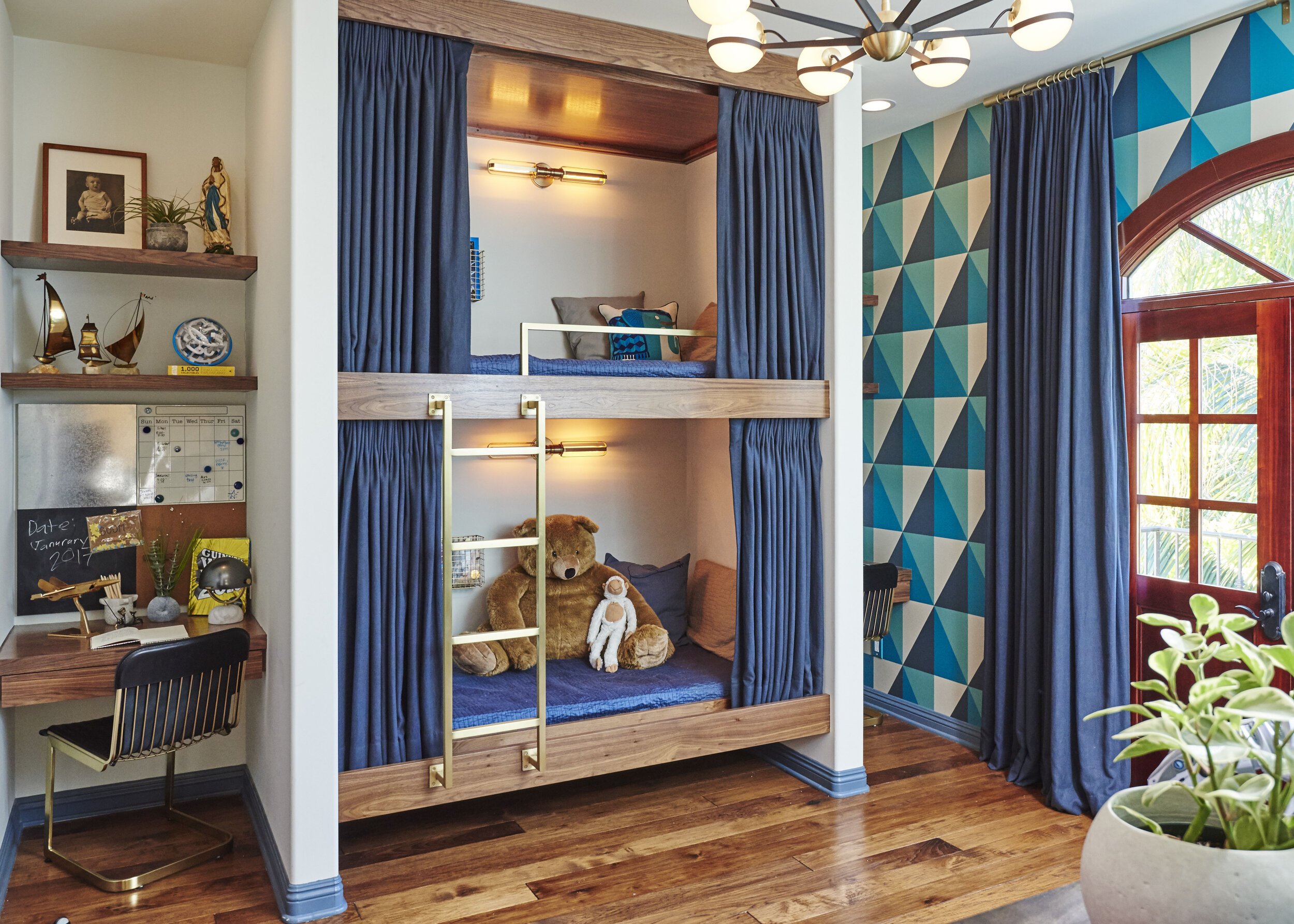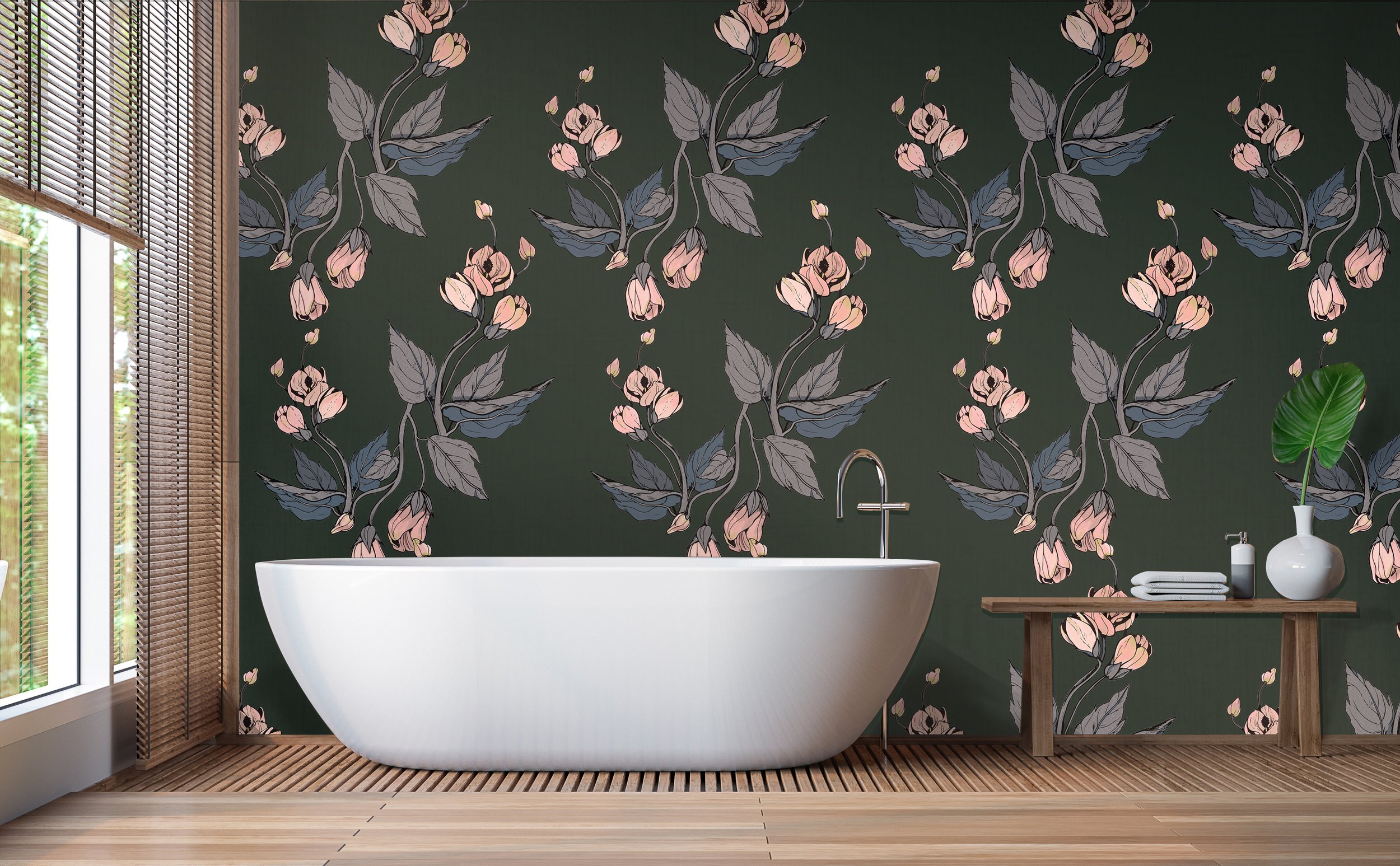Interior Design For Empaths
/Empaths often experience a heightened sensitivity to the feelings and emotions of others, a unique trait that forges deep connections with the surrounding community. Stanford University psychologist Jamil Zaki, PhD, describes empathy as the "psychological 'superglue' that connects people and undergirds cooperation and kindness."(1) However, it's important to remember that we must also care for ourselves. "The very capabilities that make someone an empath also make it more difficult when they need to protect themselves from emotional overload."(2) By creating quiet, restful, healing spaces at home, empaths can take time to decompress and circumvent compassion fatigue or burnout. This sense of control over our surroundings enables us to establish healthy boundaries while maintaining connections with the outside world. These restorative spaces are not just a luxury but a necessity for our emotional well-being, contributing to a balanced, joyful life.
According to Dr Ryan Sultan, principal investigator at the Sultan Lab for Mental Health Informatics at Columbia University Irving Medical Center, "While it may feel difficult to be more sensitive than others... It's all about learning to set boundaries, practice self-care and use your empathy in ways that are healthy and empowering for you."(3) Many empaths may seek to create a mindful, restorative environment at home. As we are all unique individuals, it is essential that we feel comfortable sharing our needs honestly in a safe, inclusive environment. An awareness and sensitivity to the unique needs of empaths can be incorporated into the design process to create a joyful and enjoyable experience. Active listening considers another person's feelings as we listen, creating a space for open and honest communication. Slow design allows us to take time to thoroughly evaluate the custom design options that best serve us in our homes. 3D renderings, for instance, offer a tangible way to get the feeling of a space, a crucial consideration when designing for empaths. A design team can also act as the main point of contact within a project, communicating sensitivities and coordinating services with other teams and crews working on the project, creating boundaries that simplify and streamline the design process.
Neuroaesthetics studies how sensory experiences impact our minds and bodies as an "emerging discipline within cognitive neuroscience, concerned with understanding the biological bases of aesthetic experiences."(4) What we see, smell, touch, and hear can emotionally affect us, and our sensory experience of a space plays a significant role in our emotional wellness. For empaths, who often have highly tuned senses, creating a peaceful and mindful home involves considering the impact of color, light, sound, and touch. These elements can all contribute to creating a tranquil, healing home environment.
Window treatments and soundproofing can help create auditory boundaries. Sudden loud noises can also be buffered throughout our home by installing soft-closing cabinets and drawers, rugs, and carpeting, contributing to a quiet and tranquil environment.
Light levels can be easily adjusted and regulated to suit our needs by having a variety of lighting sources throughout our home, such as overhead lamps, adjustable dimmers, and window treatments. If we like, we can even adjust the lighting to mimic the shifts in daylight that occur naturally throughout the day, which can affect our circadian rhythms and overall well-being.
For empaths seeking restorative sanctuary, it could be beneficial to incorporate small, intimate spaces within the home. These spaces can provide a sense of comfort, security, and respite. Custom cabinetry and furniture can create a variety of personalized spaces throughout the home, incorporating ergonomic design to create cozy, intimate spaces personalized to support our bodies. The ability to adjust lighting also enables the creation of darker, snug spaces to rest and recharge within the home. Furnishings and cushions made from textiles with soft textures or a custom weighted blanket all contribute to creating a space dedicated to comfort and relaxation. Decluttering our home with custom storage options can also create a sense of order and calmness.
Biophilic design incorporates color, pattern, texture, imagery, and materials from the natural world so that we may experience the mindful benefits of being in nature within our homes. It is an excellent option for empaths who wish to experience the beauty of the surrounding environment while seeking some time at home to recharge. Neutral, earthy colors can contribute to a calm atmosphere, and materials that celebrate the beauty of nature, such as wood flooring and finishes, can have a grounding quality. Unique stone countertops like marble and onyx connect with the natural world and exude a beautiful luxury. Wallpaper and fabric design inspired by the natural world and plenty of plants in the home can create a lush and tranquil green space. Using non-toxic wall and floor treatments that are low in VOCs throughout our home can also positively affect scent and air quality.
Homes designed to support emotional sensitivities give empaths a space to rest and recharge within healing environments, helping prevent emotional fatigue and burnout. These homes create a supportive space that empowers us to live mindfully and maintain balance. They become a catalyst for us to live our best lives by taking control of our emotional well-being.
Sarah Barnard, WELL AP + LEED AP, is a leading designer of personalized, sustainable spaces that support mental, physical, and emotional wellbeing. She creates highly personalized, restorative spaces that are deeply connected to art and the preservation of the environment. An advocate for consciousness, inclusivity, and compassion in the creative process, Sarah has appeared in Architectural Digest, Elle Décor, Vogue, HGTV, and many other publications. In 2017 Sarah was honored as a “Ones to Watch” Scholar by the American Society of Interior Designers (ASID).
Bibliography
1. “Cultivating Empathy.” Monitor on Psychology, American Psychological Association, 01 Nov. 2021, [www.apa.org/monitor/2021/11/feature-cultivating-empathy][0].
2. “What Is an Empath? Plus 5 Signs You Could Be One.” Forbes, Forbes Magazine, 20 Dec. 2023, [www.forbes.com/health/mind/what-is-an-empath/][1].
3. “What Is an Empath? Plus 5 Signs You Could Be One.” Forbes, Forbes Magazine, 20 Dec. 2023, [www.forbes.com/health/mind/what-is-an-empath/][1].
4. “Neuroaesthetics.” Trends in Cognitive Sciences, Anjan Chatterjee et al. 23 Apr. 2014, [www.sciencedirect.com/science/article/abs/pii/S1364661314000758].
References
1. “What Is the Relationship between Stress and Empathy?” Greater Good, greatergood.berkeley.edu/article/item/what_is_the_relationship_between_stress_and_empathy. 13 Aug 2013.
2. “Individual Differences in Preference for Architectural Interiors.” Journal of Environmental Psychology, Academic Press, Oshin Vartanian a, et al. 6 Aug. 2021, [www.sciencedirect.com/science/article/abs/pii/S0272494421001213?via%3Dihub][3].









